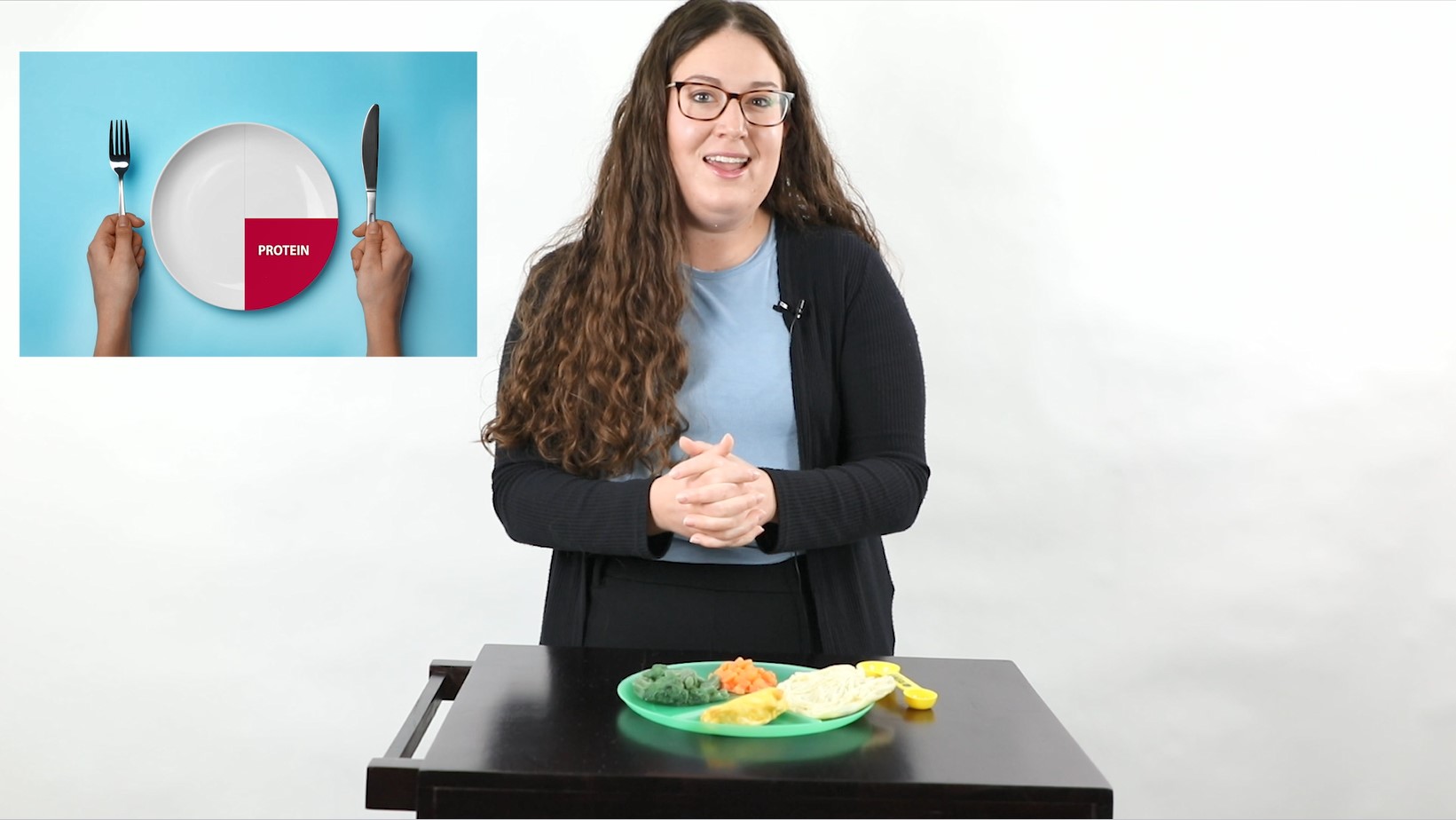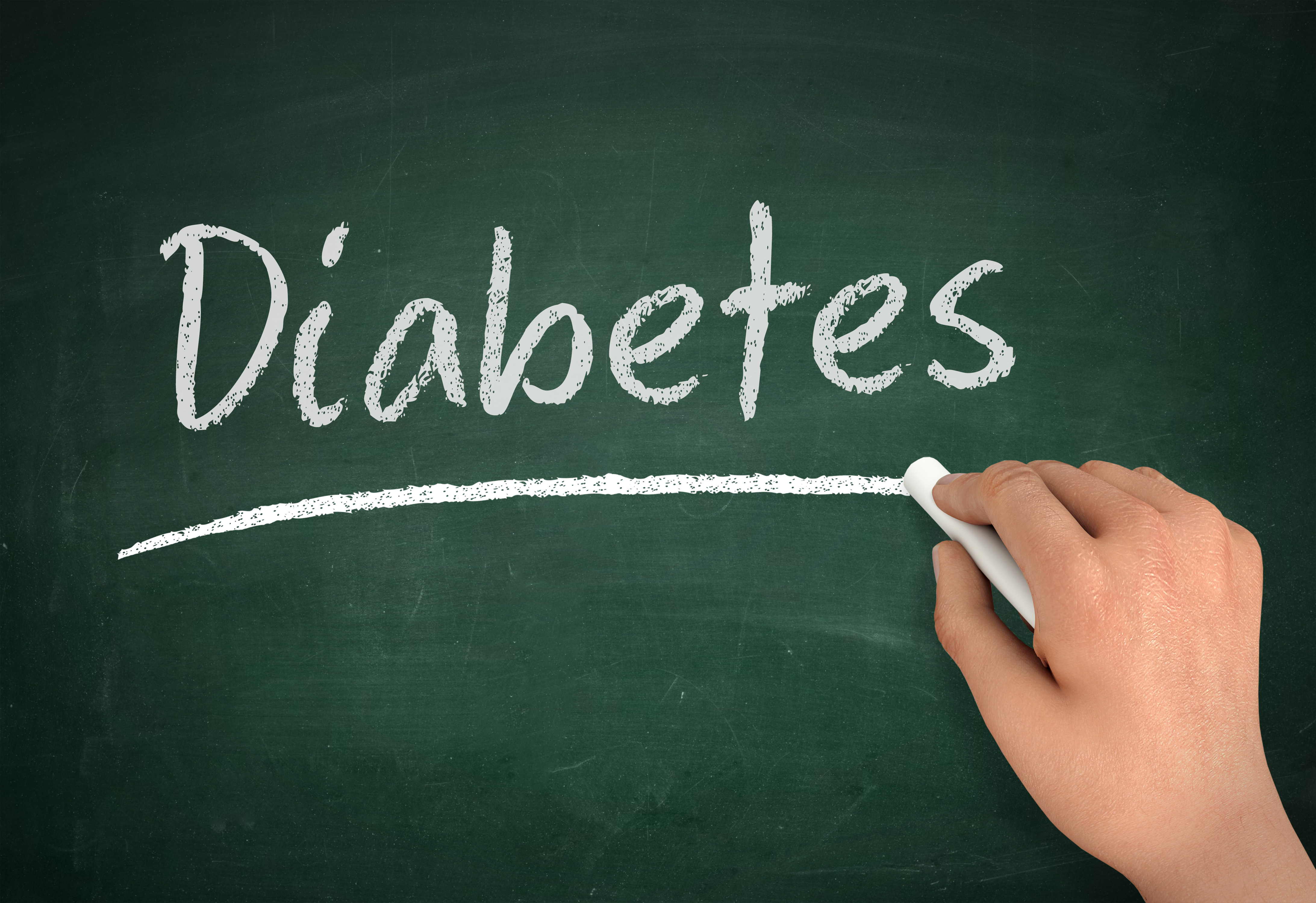Endocrinology
Specialized Endocrinology Services
Too much or too little of any hormone can be harmful to your body. You can count on our skilled endocrinologists to diagnose, treat and help you manage your hormonal imbalances. Our board-certified experts can help with a full spectrum of endocrine and metabolic issues including:
- Adrenal gland disorders
- Growth hormone disorders
- Hypertension (high blood pressure)
- Infertility
- Lipid disorders
- Kidney stones
- Osteoporosis
- Pituitary gland disorders
- Polycystic ovarian syndrome
- Reproductive issues
- Thyroid disorders, including overactive and underactive thyroid
- Thyroid nodules or cancer
- Weight gain or obesity
Many endocrine and metabolic disorders can affect the rest of the body, including your heart, lungs, skin, kidneys, eyes and brain. You’ll receive comprehensive medical care – our endocrinologists can coordinate your care with Freeman’s team of more than 300 physicians representing 60 specialties.
Helpful Diabetes Resources
Diabetes self-management skills are important for controlling blood sugars and preventing further complications. Freeman Diabetes Educators want to help you develop the skills you need to manage your blood sugar levels and lead a healthy and enjoyable life. The American Diabetes Care and Education Specialists have developed a list of seven self-care behaviors that address food, life and other factors that affect blood sugar regulation. These seven behaviors include healthy coping, healthy eating, being active, taking medication, monitoring, reducing risk and problem solving.

Healthy coping focuses on taking care of your whole self – both body and mind. Stress can affect our hormones and blood sugar levels; it is important to find healthy coping strategies to deal with stressors and problems life throws our way. Healthy coping skills include:
- Participating in community or faith-based activities
- Being physically active (going for a walk, playing golf, hiking, biking or lifting weights)
- Meditating
- Finding a hobby (knitting, puzzles, painting, reading books, cooking and coloring books)
- Joining a diabetes support group or the Freeman diabetes support group
- Writing in a journal
Healthy coping is an important part of long-term diabetes management, but you are not alone. Our diabetes educators can help you identify stressors in your life and find healthy coping strategies that work for you!
Nutrition plays a big role in prevention and treatment of many chronic diseases. What we eat and drink can influence blood sugar, blood pressure and blood lipid levels. There are three main macronutrients that make up food: carbohydrates, proteins and fats.
- Carbohydrates (carbs) are found in foods such milk, fruits, some vegetables, rice, grains, breads, beans, lentils, sugar and honey. Too many carbohydrates can cause a spike in blood sugar, particularly for people with diabetes. Still, carbohydrates are the body’s preferred form of energy. Therefore, a consistent carbohydrate diet (consistent carbs at each meal/snack) is recommended to help regulate blood sugars.
- Proteins are found in meat, poultry, fish, venison, pork, eggs, nuts, soy, milk and cheese. Protein is made up of amino acids, which are responsible for building and maintaining muscle and tissue in the body. Eating protein with a carbohydrate also delays the digestion of the carbohydrate, preventing a spike in blood sugar.
- Fats are used as another source of energy for the body and are found in foods such as oils, nuts, seeds, butter, avocados, flax seed, nut butters and salad dressings. When overconsumed, fats can lead to high blood lipid levels. Much like carbohydrates, we need some fat in our diet within moderation, mainly from heart healthy fats such as monounsaturated choices.
Eating a balanced diet full of vegetables, fruits, protein sources, milk, dairy and complex carbohydrates supports overall health. Fill half of your plate with nonstarchy vegetables, a quarter with protein and the last quarter with carbohydrates.

Daily activity keeps the body strong; helps regulate blood sugar, weight, cholesterol, and blood pressure; and is a great stress reliever. Physical activity includes anything that gets your body moving – from workout videos to walking the dog! 150 minutes of physical activity each week (or 30 minutes, 5 days a week) is recommended for adults. Start small by incorporating little bits of movement throughout your day such as parking at the back of the grocery store parking lot or taking the stairs.
You do not need to participate in physical activity you dread to reap the benefits. Be creative and choose activities you enjoy doing that get you moving:
- Walk your dog
- Find a gym buddy
- Schedule walking meetings instead of typical sit down
- Try a ten-minute workout video
- Put on your favorite song and dance
- Play your favorite sport
For diabetes, it’s common to be prescribed medications to help improve blood sugars when diet and lifestyle changes are not enough. It’s important that you follow the prescribed medication treatment plan, taking your medications at the right dose, frequency and time of the day. Doing so will help keep you healthy and avoid complications.
Medication treatment plans can be confusing, especially if you have several new medications. Do not be afraid to ask questions about what to do if you miss a dose, have any side effects or are unsure of the dosage or timing of when to take the medication.
Here are three tips to managing your medication treatment:
- Be aware of your current medications, their dosages, the frequency in which you take them and the time of day you take them.
- Create a daily routine and take your medications at the right time.
- Discuss your experiences or concerns with your medications with a healthcare professional. They can help you problem solve to find the best solution.
Checking your blood sugar is important, but monitoring your sleep, diet, blood pressure, mood, eye, kidney and foot health is just as critical in managing diabetes. As you gather more and more information, patterns may begin to show. These patterns give possible reasons behind the numbers. Once the patterns can be identified, a diabetes care and education specialist can help you find and treat the root of the problem.
Examples of patterns include:
- Your glucose levels are higher in the afternoon after you eat lunch.
- Your blood sugar drops to within range after you walk the dog.
- You experience low blood sugar in the afternoon when you don’t eat a snack.
Everyone has a different blood sugar monitoring schedule. For individuals who take insulin, they may check blood sugars several times a day. If you are looking for patterns from the effects of your meals on blood sugar, check your blood sugar two hours after a meal.
Behavior changes and regular check-ups may be needed to help prevent or manage chronic diseases. Diabetes mellitus increases your risk of eye, kidney and nerve damage; cardiovascular disease; slow-healing foot wounds; and skin problems.
Ways to reduce your risk include:
- Stopping smoking
- Getting regular checkups
- Eating well balanced and carb consistent meals
- Incorporating movement into your day
- Following prescribed medication plan
- Checking your feet regularly for open wounds
Health checks are an important part of staying healthy. Below are the recommended checkups for individuals with diabetes and their frequencies.
| Health Checkup | Frequency |
| HbA1c | Every 3 to 6 months |
| Blood pressure | Every doctor's visit |
| Blood lipids | Once a year |
| Eye exam | Once a year |
| Kidney function | Once a year |
| Foot checkup | Every year |
| Dental checkup | Twice a year |
Every body is different – the same treatment plan and lifestyle changes may not work for everyone. You may follow the diet and treatment plan you discussed with your diabetes educator and still not see the change you desired in your blood sugar levels. This is not a sign of failure, but simply that some problem solving must be done to find what works best for your lifestyle and your body.
Identify the problem: Maybe something has changed in your life such as a new medication, job, food, travel or family situation. These changes also may influence blood sugar levels. Once the problem is identified, you can look for a solution.
Find a solution: Think of possible solutions based on the tools you have available. For example, if you find your stress level is high due to a project at work which is causing your blood sugars to run high, what are some ways you can alleviate stress? Maybe it’s going for a walk on your lunch break or meeting up with friends for a meal after work. A diabetes educator will also help you brainstorm solutions.
Put your plan into action: The final step is to apply the solution you have found to resolve the problem. It may be helpful to have a couple of solutions if one does not work.
Grilled Turkey Burgers
Ingredients
- 1/4 teaspoon black pepper
- 12 oz. uncooked ground turkey or chicken breast
- 1/4 cup Dijon-style mustard
- 1/2 teaspoon curry powder
- 4 whole wheat hamburger buns, split and toasted
- 1/2 cup finely shredded carrot
- 1/4 cup thinly sliced green onions
- 2 tablespoons fine dry bread crumbs
- 2 tablespoons fat-free milk
- 1/4 teaspoon dried Italian seasoning, crushed
- 1/4 teaspoon garlic salt
- Lettuce leaves (optional)
- Sliced tomato (optional)
- Red onion (optional)
Cooking Instructions
In a medium bowl stir together carrot, green onions, bread crumbs, milk, Italian seasoning, garlic salt, and pepper. Add ground turkey; mix well. Form the turkey mixture into four 1/2-inch-thick patties. Place patties on a greased rack of an uncovered grill, directly over medium coals. Grill for 11 to 13 minutes or until patties are done (165 degrees F),* turning once halfway through grilling time.

Lemon-Cilantro Slaw
Ingredients
- 1 tablespoon lemon juice
- 2 cups packaged coleslaw mix
- 1-1/2 teaspoon olive oil
- 1/4 cup coarsely shredded carrot
- 1/4 teaspoon sugar or sugar substitute
- 1 tablespoon snipped fresh cilantro
- 1/4 teaspoon Dijon-style mustard
- 1 tablespoon chopped green onion
- Dash ground black pepper
Cooking Instructions
Whisk together lemon juice, oil, sugar, mustard, and black pepper. Add coleslaw mix, carrot, cilantro and green onion. Toss gently to coat; cover and chill for 2 hours.
Serving Size
1 cup
Nutritional Analysis Per Serving
59 calories, 3 g fat, 43 mg sodium, 6 g carbohydrates, 2 g fiber, 1 g protein

Chicken Tortilla Soup
Ingredients
- 4 boneless chicken breast halves, diced
- 2 tbsp. olive oil
- 1 garlic clove, minced
- 1 Tbsp. ground cumin
- 32 oz. low-sodium chicken broth
- 8 oz. monterey jack cheese, shredded
- 32 oz. can chopped stewed tomatoes
- 6 oz. baked tortilla chips
- 8 oz. light sour cream
- 1 cup salsa
- 1/2 cup fresh cilantro, chopped
Cooking Instructions
Cook chicken in olive oil until done, add garlic. Saute for a few minutes. In large pot, combine chicken, broth, tomatoes, salsa, cilantro and cumin. Bring to boil and simmer for 30 minutes, stirring occasionally. Serve in 8 oz. portions with 1/2 oz. shredded cheese, 6 tortilla chips and 1 Tbsp. sour cream. Serves 12.
Nutritional Analysis
275 calories, 10 g fat, 450 mg sodium, 27 g carb, 19 g protein

Hearty Tostadas
Ingredients
- 1 pkg. crispy tostada shells
- 1 can low-fat refried beans, heated
- Small carton light sour cream
- 1 pkg. 2% milk Mexican blend shredded cheese
- Avocado, mashed
- Shredded lettuce
- Salsa
- Optional: Add a few tablespoons of diced chicken or lean ground beef to each tostada shell without adding any carbs.
Cooking instructions
Build tostadas with one crispy tostada, add 1/4 cup refried beans and spread on shell. Add chicken or meat at this time, if desired. Add a pinch of shredded lettuce, 2 tbsp salsa, 1 tbsp. light sour cream and top with 1 tbsp. shredded cheese. Add mashed avocado for an extra spoon of healthy fat.
Serving Size
2 tostadas
Nutritional Analysis
310 calories, 12 g fat, 705 mg sodium, 37 g carb, 19 g protein, 6 gm fiber. Note: 1/5 avocado adds 50 calories and 4 g fat

Pineapple Sweet Potatoes
Ingredients
- 4 medium sweet potatoes, unpeeled (or two 16 oz. cans, drained)
- Vegetable oil spray
- 1/4 c pineapple juice
- 2 tbsp light margarine
- 1 tbsp drained crushed pineapple
- Pinch of ground cinnamon
- Pinch of ground nutmeg
- Pinch of ground allspice
- 4 tbsp Splenda brown sugar
- 1 tsp light margarine
Cooking instructions
In a stockpot with water just to cover, boil sweet potatoes until tender, about 30 minutes. Remove and discard skins. Preheat oven to 425ºF. Lightly spray a 1-quart casserole dish with vegetable oil spray. In a large mixing bowl, mash sweet potatoes. Add pineapple juice and 2 tablespoons margarine—beat until fluffy. Stir in pineapple, cinnamon, nutmeg and allspice. Spread mixture in casserole dish. Drizzle Splenda brown sugar over sweet potato mixture and dot with margarine. Bake uncovered for 15 minutes, or until thoroughly heated.
Nutritional Analysis
113 calories, 24 g carbohydrate, 0 mg cholesterol, 2 g total fat, 0 g saturated fat, 2 g fiber, 6 mg sodium, 1 g protein

Hearty Turkey Stew
Ingredients
- 2 c chopped onion
- 2 c diced carrots
- 2 c cubed turkey breast
- 1 c frozen sweet corn
- 1 c chopped celery
- 1 c frozen peas
- 2 c diced, peeled tomatoes
- 1 c sliced zucchini
- 1/2 c instant barley
- 5 c low-sodium chicken broth
- 2 tsp olive oil
- Paprika
Cooking instructions
Heat olive oil and cook diced turkey until hot (if using leftovers). In a large soup pot, combine the onion, turkey, celery, tomatoes with liquid, carrots, broth, corn, peas, zucchini, and barley. Stir and simmer over medium heat for half an hour, or until vegetables are cooked as desired. Add paprika to taste.
Serving Size
8 oz. cup of soup
Nutritional Analysis
150 calories, 4 g fat, 17 g carbohydrate, 11 g protein, 340 mg sodium, 3 g fiber, 21 mg cholesterol

Roasted rosemary potatoes
Ingredients
- 2 lbs new or waxy potatoes
- 1 head garlic, cloves separated
- 3 tbsp olive oil
- 5 sprigs rosemary
- 1 bay leaf
- Sea salt
Cooking instructions
Preheat oven to 400 degrees. Put potatoes in aluminum foil or shallow baking dish. Add garlic, rosemary, bay leaf, and olive oil. Season with sea salt. Toss well to mix. Add splash of water. Tightly close foil or cover baking dish. Bake until potatoes are tender, approximately 40-60 minutes.
Serving Size
2 new potatoes
Nutritional Analysis
200 calories, 30 g carbohydrates, 6 g fat, 6 g protein, 200 mg sodium, 4 g fiber

Pumpkin Pie with Splenda
Ingredients
- 1 deep dish pie shell, frozen
- 1 (12 oz) can evaporated milk
- 3 lg eggs, beaten
- 1 c Splenda (granular)
- 1 (15 oz) can pure pumpkin
- 2 teaspoons pumpkin pie spice
Cooking instructions
Heat oven to 375 degrees. Allow pie crust to thaw at room temperature for 15 minutes. Combine eggs, pumpkin, evaporated milk, Splenda and pumpkin pie spice in a large mixing bowl. Beat with electric mixer on medium speed for approximately one minute. Pour mixture into thawed pie shell. Bake on center oven rack for 35-40 minutes, or until a knife inserted in the center of pie comes out clean. Cool pie before cutting into 8 slices.
Serving size
1 slice
Nutritional Analysis
180 calories, 16 g carbohydrates, 6.5 g protein, 10 g fat, 0.4 g fiber

Diabetes Services
What is Diabetes?
Diabetes is a disease in which blood glucose (blood sugar) levels are higher than normal due to the body’s inability to either produce or use insulin (a hormone that regulates blood glucose). In the United States, diabetes is the #7 cause of death. 25.8 million children and adults have diabetes.
There are three main types of diabetes:
- Type 1 diabetes, which means the body does not produce insulin
- Type 2 diabetes, which means the body is not using insulin well
- Gestational diabetes, which is high blood sugar (diabetes) that begins or is first diagnosed during pregnancy
Diabetes can cause serious health complications, including heart disease, blindness, kidney failure, and lower-extremity amputations. Early detection of diabetes can help prevent these complications.
The symptoms of diabetes can include:
- Frequent urination
- Excessive thirst or hunger
- Extreme fatigue
- Blurry vision
- Slow-healing wounds or bruises
- Unusual weight loss or weight gain
- Numbness, pain, or tingling in extremities (hands and feet)
Early detection of diabetes and disease management is important for living a healthy life. Freeman Diabetes Education can help you learn to manage your diabetes with training provided by professional diabetes educators who are certified through National Certification Board of Diabetes Educators.

Freeman Diabetes Education Clinic offers you the opportunity to meet with Freeman Diabetes Care and Education Specialists. Our team of specialists help increase confidence in your ability to manage diabetes by:
- Explaining what diabetes is and how it affects your body.
- Explaining how diabetes medications work.
- Determining what foods are best for you and how to plan meals that fit your life and budget.
- Offering tips to help cope with stress and solve problems as they arise.
- Helping you understand how to use devices like meters, insulin pens, pumps and continuous glucose monitoring devices.
- Teaching you how to use the information from these medical devices and your lifestyle to identify patterns and opportunities for improved control of your diabetes.
Diabetes care and education specialists can help people with all types of diabetes:
- Better manage their blood glucose.
- Develop coping skills to address the daily challenges of the disease and reduce the risk for complications.
- Decrease costs by reducing or eliminating the need for medications and emergency room visits.
- Help access cost-savings programs.
Nutrition consultations offered at the Freeman Diabetes Education Clinic include prediabetes, chronic kidney disease, heart disease, food allergies, gastrointestinal disorders and weight management for adults and children.
Freeman Diabetes Education Clinic meets vigorous criteria set by the U.S. Department of Health & Human Services and is accredited by the American Diabetes Association. Medicare and most health insurance plans cover diabetes education when it is offered through an accredited diabetes education program.
Osteoporosis
Osteoporosis means “porous bones”. If you have osteoporosis, your bones do not look any different, but they lose substance as well as calcium and other minerals. As a result, your bones have less strength and are more likely to fracture, especially if you have a fall.
The most common osteoporosis fractures resulting from falls are in your wrist or hip. You are more likely to have compression fractures in your vertebrae, the bones in your spine. A compression fracture is the result of the weakened bone cracking from the normal pressure of being upright. This often results in the curvature of the spine at the shoulders in older people sometimes called a “widow’s hump”.
The appearance of a widow’s hump or a fractured wrist or hip from a fall may be the first actual symptoms of osteoporosis unless your doctor has been measuring your bone density. Men also should watch for a loss of height, change in posture or sudden back pain. There are a number of risk factors that increase a person’s likelihood of having osteoporosis. Osteoporosis is often the result of a combination of factors. One is failure to obtain an optimal level of bone mass as a young adult.
This may simply be genetic because approximately 70 percent of a person’s peak bone mass is due to their inheritance.
Peak bone mass is reached by about age 30 and it remains relatively stable until about ago 50 or the time of menopause.
The single best predictor of bone strength is bone density. Bone density cannot be determined from plain x-rays, but a specialized low-dose x-ray technique called bone densitometry can be used to measure the amount of bone present in different parts of the skeleton. Research over the past decade has shown conclusively that bone density is related to risk of fracture, in much the same way that blood cholesterol is related to the risk of heart disease. The lower the bone density, the greater the risk of fractures due to osteoporosis.
Risk Factors for Women
- European or American ethnic background
- Genetics (family history)
- Personal history of fracture as an adult
- Poor general health
- Smoking tobacco
- Low body weight, less than 127 pounds
- Estrogen deficiency
- Early menopause, before age 45
- Surgical removal of the ovaries before age 45
- Some surgeries (such as gastrectomy or intestinal bypass or other bariatric)
- Prior to menopause, having a time in your life when you went more than a year without a menstrual period
- Taking medical therapy that lowers estrogen levels, such as for breast cancer or endometriosis
- Lifelong low calcium intake
- Alcohol abuse
- High caffeine intake
- Poor vision despite correction, like wearing glasses
- Falling
- Inadequate physical activity or too much exercise
Risk Factors for Men
- Heredity
- Race (white men appear to be at the greatest risk for developing osteoporosis, although the condition can affect people of all ethnic groups)
- Undiagnosed low levels of testosterone
- Falling
- Inadequate physical activity
- Age (bone loss increases with age)
- Chronic disease that alters hormone levels and affects the kidneys, lungs, stomach and intestines
- Smoking tobacco
- Alcohol abuse
- Lifelong low calcium intake
- Low body weight
- Having undergone bariatric surgery
In addition, having a history of one of these diseases can increase both a woman and man's risk of developing osteoporosis:
- Hyperparathyroidism (having an overactive parathyroid gland)
- Hyperthyroidism (having an overactive thyroid gland)
- Severe liver disease
- Kidney failure
- Pituitary tumor
- Adrenal disease
- Malabsorption
- Multiple sclerosis
- Rheumatoid arthritis
- Multiple myeloma
- Lymphoma
- Leukemia
- Diabetes
Taking one of these medications can increase one's risk as well:
- Seizure medication
- Immunosuppressive drugs
- Steroids (prednisone, hydrocortisone, dexamethasone)
- Heparin
- Lithium
- Excess Thyroxine (thyroid replacement)
Who Should Get Screened?
- Women age 65 and older
- Men age 70 and older
- Anyone 50 years or older who has had a fracture or other risk factors above
- Women going through menopause who have low-body weight, prior fracture from a fall from a standing position or lower and/or are on high-risk medications
Osteoporosis is bone degeneration usually associated with the aging process. It affects an estimated 10 million individuals and almost 34 million – men and women – have low bone mass, putting them at increased risk for developing the disease. Most patients don’t know they have osteoporosis until a big fall resulting in a fracture.
Typically considered a “woman’s disease”, about two million of those with the disease are men. In fact, about 30 percent of hip fractures occur in men and one in four men over 50 years of age will experience an osteoporotic fracture.
Since a woman has a greater than 50 percent chance of having a fracture, it is important to evaluate and treat as early as possible. Osteoporosis is often called a silent disease because bone loss occurs without symptoms. The first symptom is often a fracture. By that time, a woman has often lost 30 percent or more of her bone mass. If evaluated at an early stage, patients can initiate prevention and treatment prior to the clinical manifestations of this disease.
Our services include:
- Screen Team screening
- Bone density screening (DXA)
- Diagnosis
- Education for prevention and nutrition
- Medication management
- Physical therapy
Freeman Diabetes & Endocrine Institute offers you a “one-stop shopping” experience with most services offered under one roof in Freeman Women’s Center – even with our own board-certified radiologist specifically dedicated to women’s health issues. Additionally, we are the first and only comprehensive service of its kind in this area – and the only true “osteoporosis-driven” service in the region to effectively treat patients.
Your bone density test tells your physician if your bone density is normal, osteopenic (low bone mass) or osteoporotic.
Treatment for Women
Prevention: No matter what your bone density is, all women should optimize their lifestyle to help prevent bone loss. This includes:
- Adopting a regular exercise regimen of weight-bearing exercises, such as walking or jogging, dancing, weight lifting, racquet sports and using resistance machines.
- Additionally, it is important to get enough vitamin D. A daily intake of 400 IU, but no more than 800 IU, each day is recommended – or as directed by your physician. Obtaining adequate amounts of vitamin D from our food may be difficult. The main sources of dietary vitamin D are fortified milk (100 IU/cup), egg yolks (25 IU/yolk) and oily fish (vitamin D content varies). Sunlight exposure causes vitamin D production in the skin, but this effect is blocked by sunscreen. Many people will need vitamin D supplements to achieve an adequate intake. Most multi-vitamins contain 400 IU of vitamin D.
- Ensuring a daily calcium intake of 1,000 mg per day to age 50, and 1,200 to 1,500 mg per day for those over age 65 also is recommended.
Treating Fractures: Our goal is to prevent fractures from occurring. But sometimes, despite all our efforts, they occur. The most common osteoporotic fractures are in the wrist, spine and hip. Wrist and hip fractures may require casting, hospitalization or surgery depending on how the bone is broken. Vertebral fractures can be very painful and there are now some options to treat them.
Medication: If your bone mass and risk factors put you at high risk for fracture, your doctor also may want you to take medication either to treat or prevent osteoporosis. There are many medications available. All have risks and benefits. Only you and your doctor can select which medication is right for you.
- Estrogen: The female hormone estrogen is very effective at preventing bone loss, especially around the time of menopause. It also can help regain bone mass in older women. Estrogen reduces hip and spine fractures by about 30 to 40 percent. There is a small increase in risk for breast cancer and vascular disease such as heart attacks and strokes. There also is a small risk of developing blood clots on estrogen therapy. The risks and benefits of estrogen therapy must be weighed carefully for each woman.
- Bisphosphonates: These medications are very effective in increasing bone mass at all ages and reduce fractures by about 40 to 50 percent. Current bisphosphonates approved for osteoporosis include alendronate (Fosomax®) and risidronate (Actonel®). These medications can be hard to absorb and they must be taken on an empty stomach first thing in the morning with water only. You then must remain upright for at least 30 minutes before eating or drinking anything else. Rarely, these medications can cause esophageal irritation and ulceration. There are daily and weekly regimens of bisphosphonates; both appear equally effective at increasing bone density.
- Calcitionin: This medication is a nasal spray and some evidence suggests it may reduce vertebral fractures although the studies are small. Unlike other medications, it appears to help reduce the pain associated with fractures.
- Raloxifene (Evista®): This medication acts like estrogen at some parts of the body (bone, heart) and opposes estrogen effects at other parts (breast, uterus). It reduces the risk of vertebral fractures by 40 percent. Similar to estrogen, it increases the risk of blood clots and can increase hot flashes if used around the time of menopause. It appears to reduce the risk of breast cancer in low-risk women by about 75 percent. It has not been tested for effects on hip fracture.
- Parathyroid hormone (PTH): Teriparatide, a form of parathyroid hormone, has been shown to stimulate bone formation and increase bone mineral density. In postmenopausal women who took the drug, fracture reduction of 50 to 70 percent was seen in the spine, hip, foot, ribs and wrist. Teriparatide is self-administered as a daily injection for up to two years.
Kyphoplasty: A new treatment for osteoporosis spine fractures is called kyphoplasty. It is a minimally invasive procedure (only tiny incisions are used). Through an incision, a small balloon is inserted into the collapsed bone to restore its shape. It is then filled with a substance that hardens and helps the bone expand. Long-term trials of this procedure are ongoing.
Treatment for Men
Prevention: No matter what your bone density is, all men should optimize their lifestyle to help prevent bone loss, including:
- Adopting a regular exercise regimen of weight-bearing exercises, such as walking or jogging, weight lifting, racquet sports and using resistance machines.
- Having an adequate vitamin D daily intake of 400 IU, but no more than 800 IU each day also is recommended. Obtaining adequate amounts of vitamin D from our food may be difficult. The main sources of dietary vitamin D are fortified milk (100 IU/cup), egg yolks (25 IU/yolk) and oily fish (vitamin D content varies). Sunlight exposure causes vitamin D production in the skin, but this effect is blocked by sunscreen. Many people will need vitamin D supplements to achieve an adequate intake. Most multi-vitamins contain 400 IU of vitamin D.
- Ensuring a daily calcium intake of 1,000 mg per day to age 50, and 1,200 to 1,500 mg per day for those over age 65 is recommended.
Treating Fractures: Our goal is to prevent fractures from occurring. But sometimes, despite all our efforts, they occur. The most common osteoporotic fractures are in the wrist, spine and hip. Wrist and hip fractures may require casting, hospitalization or surgery depending on how the bone is broken. Vertebral fractures can be very painful and there are now some options to treat them.
Medication: If your bone mass and your risk factors put you at high risk for fracture, your doctor also may want you to take medication either to treat or prevent osteoporosis. There are many medications available. All have risks and benefits. Only you and your doctor can select which medication is right for you.
- Bisphosphonates: These medications are very effective in increasing bone mass at all ages and reduce fractures by about 5 percent. Current bisphosphonates approved for osteoporosis include alendronate (Fosomax®) and risidronate (Actonel®). Your doctor may recommend taking bisphosphonates with supplemental calcium and vitamin D. These medications can be hard to absorb and they must be taken on an empty stomach first thing in the morning with water only. You then must remain upright for at least 30 minutes before eating or drinking anything else. Rarely, these medications can cause esophageal irritation and ulceration. There are daily and weekly regimens of bisphosphonates; both appear equally effective at increasing bone density.
- Calcitionin: This medication is a nasal spray and some evidence suggests it may reduce vertebral fractures although the studies are small. Unlike other medications, it appears to help reduce the pain associated with fractures. While calcitionin is currently only FDA approved for the treatment of osteoporosis in postmenopausal women, evidence suggests that it may have similar effects of men.
- Testosterone replacement therapy: This medication may be prescribed to men with low testosterone levels and has been shown to increase muscle mass and strength, libido, bone mass and hair growth.
- Parathyroid hormone (PTH): Teriparatide, a form of parathyroid hormone, has been shown to stimulate bone formation and increases bone mineral density. Teriparatide is self-administered as a daily injection for up to two years.
Kyphoplasty: A new treatment for osteoporosis spine fractures is called kyphoplasty. It is a minimally invasive procedure (only tiny incisions are used). Through an incision, a small balloon is inserted into the collapsed bone to restore its shape. It is then filled with a substance that hardens and helps the bone expand. Long-term trials of this procedure are ongoing.
Our experts are devoted to evaluating and treating patients with osteoporosis and other forms of diseases that affect the bone, including:
- Estrogen deficiency states
- Disorders of calcium metabolism
- General bone health disorders
- Hyperparathyroidism
- Metabolic bone disease (including hypocalcemia)
- Osteopenia
- Osteomalacia
- Primary and secondary osteoporosis
- And more
Today, there is so much more known about diagnosing, preventing and treating osteoporosis as well as the condition’s resulting complications. There are numerous medications available to control the disease. New medication and other treatments have changed the way we look at osteoporosis.
Our experts will choose the best treatments for your individual needs. Equipped with a state-of-the-art digital dual-energy x-ray absorptiometry (DXA) scanner for spine, hip and wrist scans as well as an ultrasound scanner for heel bone measurements, we can diagnose osteoporosis in its early stages and determine the best care for our patients.
For further treatment, you may then be referred to an orthopaedic specialist or rheumatologist, depending on your condition.
Meet our Team
417.347.5700
Freeman Diabetes Education
1532 W. 32nd St., Suite 202 Joplin, MO

